
by Kathryn Brenne

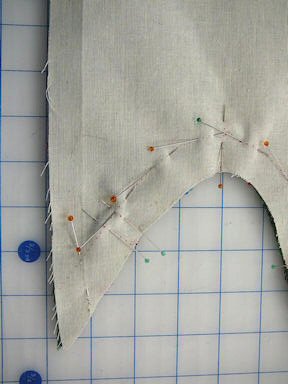
Pinning along stitching line for thread tracing
Thread tracing is used to outline the stitching lines, fold lines and pocket placement lines on a piece of fabric. This allows you to perfectly match up pattern pieces, and works great with fabrics with lots of texture. I thread traced the hemlines, the center front of the garment, the finished front edges, the neckline, the sleeve cap, armsyce, buttons, buttonholes and pocket placement using a running stitch.
With the pattern pinned to the fabric, I pin along the stitching line at 1" intervals.
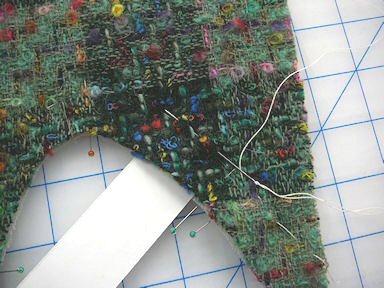
Thread tracing using pins as a guideline. Cardboard inserted to prevent layers from being stitched together
I then turn the fabric over and thread trace the outline of the pins.
If I am thread tracing two layers of fabric, I slip a narrow piece of cardboard between the layers to prevent them from being stitched together. Thread trace one layer, pin the thread tracing line, turn the fabric over and thread trace the other piece along the pin line.
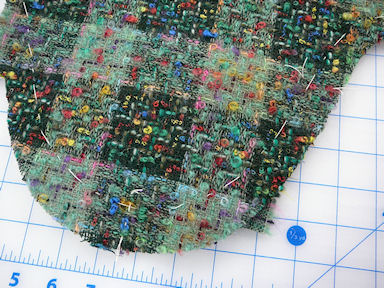
Finished thread tracing with
a notch wrong side
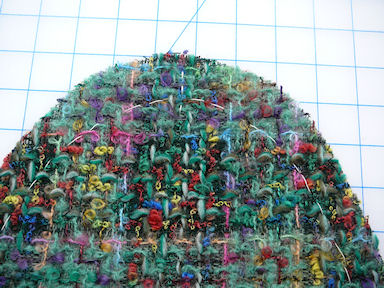
Finished thread tracing right side
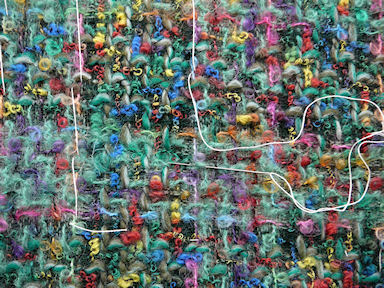
Diagonal basting rows are worked vertically with the needle inserted from right to left
Diagonal basting can be used to hold two layers together. The stitch is worked vertically with the needle being inserted from right to left horizontally. Take a stitch then drop down and take another stitch. Spacing between stitches can vary between 1" to 3".

